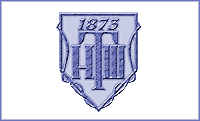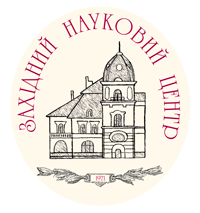Alona LUBA-ONUFRIICHUK, Oleksii PAVLYUK
Ivan Franko National University of Lviv, Kyryla і Mefodiya Str., 6, 79005 Lviv, Ukraine e-mail: alona.luba@lnu.edu.ua
DOI: https://doi.org/10.37827/ntsh.chem.2025.78.182
COMPLEXATION OF CU(I) HALIDES WITH N-ALLYLTHIOMORPHOLINE DERIVATIVES: SYNTHESIS AND CRYSTAL STRUCTURES OF [C4H8NS(C3H5)2CuBr2] AND C4H8NS(C3H5)2I
Two new compounds based on N,N′-diallylthiomorpholinium derivatives were synthesized using alternating current electrochemical synthesis and structurally characterized by single-crystal X-ray diffraction. The Cu(I) complex [C₄H₈NS(C₃H₅)₂CuBr₂] (1) was obtained from an ethanol solution of CuBr₂ and the organic bromide salt C₄H₈NS(C₃H₅)₂Br: space group P21/c, Z = 4, a = 8,1635(4), b = 13,3270(6), c = 13,1121(7) Å, β = 104,310(5)°, V = 1382,27(12) Å3, calc. = 1,959 г/см3, (MoK) = 7,48 mm−1, max. = 28,9, 20071 measured, 3169 used reflections, R(F2) = 0,025, S = 1,02. The crystal structure reveals that the copper(I) center is tetrahedrally coordinated by one sulfur atom from the heterocyclic ligand and three bromide ions, forming a distorted [CuSBr₃] polyhedron (τ₄ = 0.87). Bridging bromide atoms link two such units into a dimeric {Cu₂L₂Br₄} motif, stabilized by weak intermolecular C–H···Br hydrogen bonds. Notably, the allyl groups of the organic cation remain uncoordinated. In contrast, electrochemical synthesis from an acetonitrile solution of C₄H₈NS(C₃H₅)₂Br and iodine yields the iodide salt C₄H₈NS(C₃H₅)₂I (2), which does not form a Cu(I) complex: space group P21/c, Z = 4, a = 10,1197(6), b = 8,7394(6), c = 14,5837(9) Å, β = 102,702(6), V = 1258,22(14) Å3, calc. = 1,643 г/см3, (MoK) = 2,67 mm−1, max. = 29,0, 6518 measured, 2777 used reflections, R(F2) = 0,033, S = 1,05. Its crystal structure shows partial disorder of one allyl group over two positions with comparable occupancy, and the lattice is stabilized only by weak C–H···I interactions. These results highlight the different coordination behavior of bromide and iodide anions in the presence of soft sulfur-donor ligands, and emphasize the structural impact of halide identity on Cu(I) complex formation with N-allyl-substituted heterocycles.
Keywords: Cu(I) complexes, N-allyl derivatives, thiomorpholine, crystal structure, electrochemical synthesis, halide ligands.
References:
-
1. Astrain-Redin N., Sanmartin C., Sharma A.K., et al. From natural sources to synthetic derivatives: the allyl
motif as a powerful tool for fragment-based design in cancer treatment. J. Med. Chem. 2023. Vol. 66. P. 3703–3731.
(https//doi.org/10.1021/acs.jmedchem.2c01406).
2. Chirra N., Shanigarapu V., Abburi N.P., et al. Synthesis and antiviral activity of novel
imidazo[2,1-b]thiazoles coupled with morpholine and thiomorpholines. J. Heterocycl. Chem. 2024. Vol. 61. P.
496–505. https//doi.org/10.1002/jhet.4778.
3. Palme P.R., Goddard R., Imming P., et al. Structural characterization of 4-(4-nitro-phenyl)-thiomorpholine, a
precursor in medicinal chemistry. Molbank. 2024. Vol. 2024. P. M1795. https//doi.org/10.3390/M1795.
4. Zhang P., Yan Z., Li C., et al. Low-dimensional hybrid copper(i) halides single crystals: synthesis,
structures, and tunable photoluminescence. Chem. Eng. J. 2024. Vol. 496. P. 154106.
https//doi.org/10.1016/j.cej.2024.154106.
5. Pavlyuk O., Goreshnik E. Synthesis and crystall structure of mixed halide Cu(I) complexes with
1,3-benzimidazolone. Visnyk of the Lviv University. Series Chemistry. 2019. Vol. 60. P. 170–178.
https//doi.org/10.30970/vch.6001.170. (in Ukrainian).
6. Goreshnik E.A., Schollmeyer D., Mys’kiv M.G. Non-isomorphic chlorine–bromine substitution in the copper(I)
halide π-complexes with 1-allyl-4-aminopyridinium. Z. Anorg. Allg. Chemie. 2003. Vol. 629. P. 2040–2045.
https//doi.org/10.1002/zaac.200300196.
7. Luba A., Pavlyuk O., Goreshnik E. Copper(I) halide complexes with N,N’-diallylthiomorpho-linium chloride:
synthesis and crystal structure. Visnyk of the Lviv University. Series Chemistry. 2022. Vol. 63. P. 96–105.
https//doi.org/10.30970/vch.6301.096. (in Ukrainian).
8. Fedorchuk A.A., Slyvka Y.I., Goreshnik E.A., et al. Crystal structure and NLO properties of the novel
tetranuclear copper(I) chloride π-complex with 3-allyl-2-(allylimino)-1,3-thiazolidin-4-one. J. Mol. Struct. 2018.
Vol. 1171. P. 644–649. https//doi.org/10.1016/j.molstruc.2018.06.017.
9. Mikhalichko B. M., Myskiv M. G. Patent. No. 25450 A Ukraine, IPC6 C30B 7/12, C30B 7/14. Method of obtaining
crystalline modifications of copper halide π-complexes / Ukraine. No 95083610. Application. 01.08.95. Publ.
10/30/98 Bull. No. 6. 1998. S. 4. (in Ukrainian).
10. Gordiychuk O.R., Myskiv M.G. Pat. 108760 Ukraine, IPC6 C25 B 1/24. C 30 B 7/12, C 30 B 7/14. Method for
synthesis of copper (I) iodide coordination compounds - No U2016 01668. (in Ukrainian).
11. Rigaku CrysAlisPro software system, version 1.171.40.61a. rigaku oxford diffraction, http://www.rigaku.com.
2019.
12. Sheldrick G.M. SHELXT – integrated space-group and crystal-structure determination. Acta Cryst. A. 2015. Vol.
71. P. 3–8. https//doi.org/10.1107/S2053273314026370.
13. Sheldrick G.M. Crystal structure refinement with shelxl. Acta Cryst. C. 2015. Vol. 71. P. 3–8.
https//doi.org/10.1107/S2053229614024218.
14. Dolomanov O.V., Bourhis L.J., Gildea R.J., et al. OLEX2: a complete structure solution, refinement and
analysis program. J. Appl. Crystallogr. 2009. Vol. 42. P. 339–341. https//doi.org/10.1107/S0021889808042726.
15. Yang L., Powell D.R., Houser R.P. Structural variation in copper(i) complexes with pyridylmethylamide ligands:
structural analysis with a new four-coordinate geometry index, τ4. Dalt. Trans. 2007. P. 955–964.
https//doi.org/10.1039/B617136B.
16. Hellner E., Koch E. A comparison of the crystal structures of Sb2Tl7, Cu5Zn8 (γ-brass), and Ir3Ge7. Can. J.
Chem. 1980. Vol. 58. P. 708–713. https//doi.org/10.1139/v80-108.
17. Boeyens J.C.A., Dobson S.M., Mboweni R.C.M. Structure of
di-μ-bromo-(4-thia-1,7-diazoniaheptane)bis[bromocopper(I)] and bromo(1,4,7-triazaheptane)copper(Ii) bromide. Acta
Cryst. C. 1991. Vol. 47. P. 186–188. https//doi.org/10.1107/S010827019000720X.
18. Dubler E., Gyr E. New metal complexes of the antitumor drug 6-mercaptopurine. syntheses and X-ray structural
characterizations of dichloro(6-mercapto-purinium)copper(I), dichlorotetrakis(6-mercaptopurine)cadmium(II), and
bis(6-mercaptopurinato)cadmium(II) dihydrate. Inorg. Chem. 1988. Vol. 27. P. 1466–1473.
https//doi.org/10.1021/ic00281a032.
19. Kwon S.-Y., Cho J.-H., Lee H.-I., et al. Cu(I) coordination complex with ttf-based radical cation ligand.
Inorg. Chem. Commun. 2005. Vol. 8. P. 510–512. https//doi.org/10.1016/j.inoche.2005.03.012.
20. Mys’kiv M., Goreshnik E., Pavlyuk O. Crystal chemistry of copper(I) halide pi-complexes with n-allyl
derivatives of aromatic heterocycles. Ann. Polish Chem. Soc. 2004. Vol. 3. P. 317–320.
21. Sunday N.F. Emerging trends in coordination polymers and metal-organic frameworks: perspectives, synthesis,
properties and applications. Arch. Org. Inorg. Chem. Sci. 2018. Vol. 1. P. 1–13.
https//doi.org/10.32474/aoics.2018.01.000106.
22. Spek A.L. PLATON, an integrated tool for the analysis of the results of a single crystal structure
determination. Acta Cryst.A. 1990. Vol. 46. P. 34. https//doi.org/10.1107/S0108767390099780.
23. Goreshnik E.A., Schollmeyer D., Mys’kiv M.G., et al. X-ray investigation and coordination behaviour of the
1,3-diallylbenzimidazolium cation in [C13H15N2]+2 [CuCl2.58Br1.42]2- and [C13H15N2]+[Cu2Cl0.67Br2.33]– complexes.
Z. Anorg. Allg. Chemie. 2000. Vol. 626. P. 1016–1019.
https//doi.org/10.1002/(SICI)1521-3749(200004)626:4<1016::AID-ZAAC1016>3.0.CO;2-Z.
24. Slyvka Yu., Pokhodylo N., Myskiv M. Synthesis and crystal structure of copper(I) nitrate π-complex with
1-(4-methylphenyl)-5-allylsulfanyl-1H-tetrazole Visnyk of the Lviv University. Series Chemistry. 2021. Vol. 62.
P. 109–115. https//doi.org/10.30970/vch.6201.109.
25. Decato D.A., Sun J., Boller M.R., et al. Pushing the limits of the hydrogen bond enhanced halogen bond—the
case of the C–H hydrogen bond. Chem. Sci. 2022. Vol. 13. P. 11156–11162. https//doi.org/10.1039/D2SC03792K.
How to Cite
LUBA-ONUFRIICHUK A., PAVLYUK O. COMPLEXATION OF CU(I) HALIDES WITH N-ALLYLTHIOMORPHOLINE DERIVATIVES: SYNTHESIS AND CRYSTAL STRUCTURES OF [C4H8NS(C3H5)2CuBr2] AND C4H8NS(C3H5)2I. Proc. Shevchenko Sci. Soc. Chem. Sci. 2025. Vol. 78. P. 182-193.

